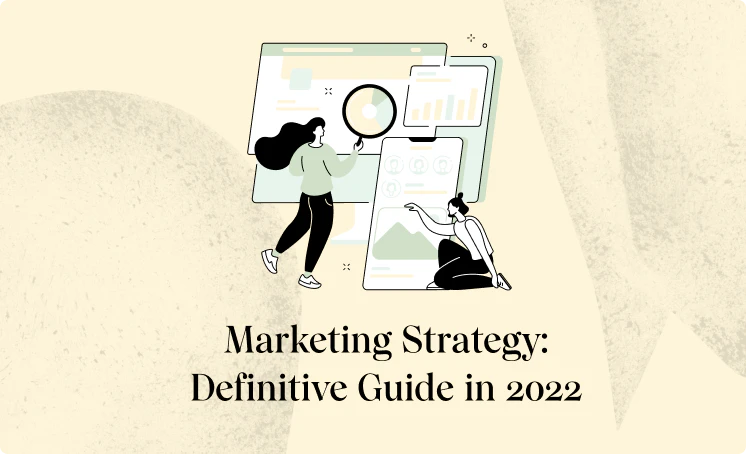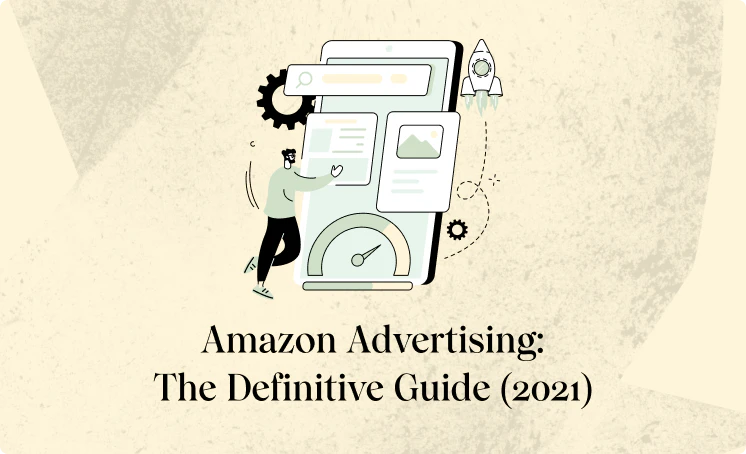Introduction
If you sell on Amazon and aren’t using Fulfilled by Amazon, you could be putting a ceiling on your growth.
Amazon FBA provides small brands the infrastructure to grow into big brands without the upfront investment of warehouses and around-the-clock staff.
But there are some things you need to know before you get started.
What Is Amazon FBA?
FBA (or Fulfillment by Amazon) is a program Amazon offers to third-party sellers who want help managing and shipping their inventory.
It prevents small business sellers from worrying about warehousing, shipping, and even some parts of their customer service.
Amazon knew the sellers on their site would have to find storage and get their products out to customers, so they decided to offer their resources for a smaller cost than you’d be able to handle all aspects of managing your merchandise on your own.
Why Does Amazon FBA Matter?
Amazon FBA is a game-changer for brands looking to get started or to join an established marketplace.
The program takes away the obstacles of storing and shipping massive volumes of inventory that may have prevented business growth if you operated solely on your own.
Not to mention the access you gain to Amazon’s exclusive Prime audience.
Is Amazon FBA A Good Fit For All Businesses?
While Amazon FBA offers tons of value to thousands of businesses, it may not be the best choice for all sellers.
When you use FBA, you have to comply with all of their guidelines and shipping practices, including your products coming in Amazon boxes.
It can be more challenging to create a brand that customers identity outside of Amazon if you want to expand your presence off of the marketplace.
Some brands may prefer to build up their brand awareness before joining Amazon if a long-term brand is their ultimate goal.
Even if the brand isn’t your core focus, certain industries like furniture aren’t well suited for FBA due to the costs.
Don’t jump all in with FBA until you’ve considered all the pros and cons.
How Does Amazon FBA Work?
Step 1 – Ship your inventory to Amazon. Before you submit your inventory to Amazon, you will update your inventory in Seller Central, so you’ll know where they want you to send it, and they know what is coming.
Step 2 – Amazon will catalog and store your inventory. Once your products arrive, Amazon will organize and store them.
Step 3 – Your customer purchases your product from your available inventory.
Step 4 – Amazon handles the shipping. Amazon staff will remove your product from inventory, box and ship it for you.
Step 5 – Amazon will take care of (most) customer service as needed. If your customer has questions regarding the status of their order (such as tracking information) or wants to return the product, they can do that online via their account or by contacting Amazon’s 24/7 customer service.
Step 6 – You get the money for your product minus Amazon fees. Amazon FBA isn’t a free service, and you’ll need to account for the per unit and monthly fees. We’ll cover these fees below.
Amazon FBA Fees
There are four main fee types associated with Amazon FBA.
Seller Fees
Amazon has two account types – individual and professional – that you will have a fee for.
The individual account will take $0.99 from every sale, and the professional is $39 per month.
In addition to this, Amazon will take 15-18% of your product price. The standard is 15%, but some categories have extra fees.
Fulfillment Fees
You will be charged a fee for every unit shipped. The fees will depend on your product’s size, again with some product categories requiring added fees.
Storage Fees
Amazon charges storage fees on a monthly basis that are calculated by the amount of space your products take up (per cubic foot).
There are also long-term fees for products that have been sitting in an Amazon warehouse for more than 365 days.
International Shipping Fees
If you want your products to have a global customer base, Amazon FBA can help you reach that goal.
Amazon will ship your products internationally should you choose, but you’ll have to pay the fee.
The Pieces Of Amazon FBA You’re Responsible For
Identifying and Sourcing Your Products
Amazon offers a managed marketplace and traffic, but they don’t tell you what products to sell.
You’ll need to learn how to identify potential product opportunities on your own.
Maintaining Your Inventory
While Amazon will alert you when your stock is getting low, it’s ultimately your responsibility to know how long it will take to get your products to them before you run out of stock.
Marketing Your Products

It’s not Amazon’s responsibility to develop and execute your marketing plan.
It will be on you to figure out how to get your products in front of the best customers.
The Pros Of Amazon FBA
Enrolling your products in Amazon FBA has numerous benefits for both your sales and your convenience.
Built-In Logistics
Managing your own inventory and shipping can be a complete nightmare if you’re a one-person or small team operation.
Luckily, Amazon FBA takes care of all that stress. You send in the product as needed, and Amazon will keep track of it and ship it for you.
You never have to worry about running out of boxes and packing tape or overnighting a customer order again!
Discounted Shipping
Considering Amazon ships in such a massive volume, the packages that ship from an Amazon warehouse receive significant shipping rate discounts.
So, even though there are fees that come with FBA, some of the cost is offset by the savings you get from Amazon’s relationships with the big shipping companies.
Given the continued rising costs to ship packages, this is a major upside.
Streamlined Returns
Because Amazon is keeping your inventory and fulfilling your products, they also take care of returns for you.
While there are fees connected to returns on some product categories, you don’t have to handle the customer service aspect.
24/7 Customer Service
Amazon’s customer service team works on behalf of all sellers at no extra cost.
This means you don’t have to be available at all times or hire a staff to address customer questions or complaints.
Amazon customer service staff is available at all times, so you never have to worry about time zone issues or missing a customer when they try to call.
Limitless Storage
Amazon has 185 fulfillment centers worldwide, and they continue to expand.
Amazon has the infrastructure to house almost any volume of product you need them to.
Compare this to any relatively small storage space your budget would have you capped at, and you’ll see how Amazon provides your business nearly unlimited growth potential.
Fast Delivery
Again, because Amazon has such an expansive fleet of warehouses spread out, you’re products can get to your customers faster than you’d ever be able to do on your own.
As you know, this was one of Amazon’s first major differentiators to their customers, and they continue to double down on it to your benefit.
Multi-Channel Fulfillment Coordination
Not only will Amazon allow you to store and ship items you are selling on its marketplace, but it will also fulfill your orders from other connected channels.
For sellers that utilize eBay and BigCommerce, you can set it up, so Amazon takes care of fulfillment on those orders too.
Use of the Amazon Brand
Online shoppers trust Amazon more than they trust one-off ecommerce stores. Amazon has spent a lot of time and money building its reputation so that shoppers feel confident purchasing on the marketplace.
When trying to acquire new customers, selling on Amazon will help push them to complete a purchase because they understand how the process will work and that it isn’t some kind of scam.
Plus, they know they can easily return the product if they aren’t happy.
Prime Audience Exposure
Being enrolled in Amazon FBA makes your products eligible for Amazon Prime.
Prime subscribers tend to choose eligible products over ineligible products because it allows them to receive their items more quickly and for free.
This can help your products receive some extra attention.
Better Ranking
Amazon knows that its Prime subscribers and other shoppers want the products that can get to them the fastest.
If your products are sitting in its warehouses, Amazon knows exactly how quickly those products can be packaged and shipped out, so it prioritizes them in the algorithm.
This means your products are likely to show higher up in the search results and be seen by more shoppers than products that are fulfilled by the seller.
Win the Buy Box
Amazon doesn’t just position FBA enrolled products better in the search results. It also gives those products a better chance at winning the coveted “buy box.”
If you aren’t selling an original product, you know how vital this buy box is to sales, and winning it should be your top priority.
Personal Freedom
When you don’t have to worry about housing inventory or getting products shipped out, you aren’t restricted to working from one location.
Sourcing and listing products, along with customer service, can all be done from your laptop (or even your phone), allowing you to work from wherever you are.
The Cons Of Amazon FBA
But Amazon FBA doesn’t come without a few challenges either.
FBA Fees
Warehouses cost money to run, so Amazon FBA is not free, as we discussed above.
Fulfillment and storage fees can add up quickly, especially if you have larger/heavier products.
You’ll need to determine if the benefits outweigh the costs for your products before enrolling your products in Fulfilled by Amazon.
If you decide FBA is worth it, you may want to focus on small, lightweight products moving forward to limit the costs.
Storage Fees for Slow Moving Inventory
One fee that you want to try to avoid is the extra fee associated with long-term storage.
Obviously, the goal is to have fast-moving products that don’t end up requiring these fees, but there is a fine line between ordering enough products to stay in stock and ordering too much product that ends up sitting on an Amazon warehouse shelf for too long.
At first, it’s impossible to know exactly how long it will take to move a product, but over time you should be able to better calculate how many units to send to Amazon and how often they will be replenished.
Potential for Higher Returns
While it’s convenient for you that Amazon handles the return process, it can also cause a problem.
Because Amazon makes returns so easy, customers are more likely to buy an item they weren’t sure about, only to return it.
Amazon customer service may be quicker to start a return than to walk the customer through what they need to know because they don’t understand every item on their marketplace.
Strict Product Prep
Amazon has stringent guidelines on how each piece of your inventory must be labeled and prepped for shipping.
If your product arrives at an Amazon warehouse and does not meet the guidelines, Amazon will not accept it. This will cost you both time and money.
Amazon will prep your products for you, but it comes at a cost.
Inventory Quality Concerns
Amazon has to handle and keep track of a vast amount of inventory, so of course, there are sometimes issues where inventory may be misplaced or mishandled.
If it is Amazon’s fault, they will reimburse you, but it isn’t always that simple to get resolved.
Inventory might be damaged once it arrives at the warehouse but not get noticed at the time, resulting in you losing money on that product without Amazon reimbursing you.
Calculating Sales Tax
Accurately calculating sales tax can be one of the trickier parts of selling online.
Your business may be located in one location, but because your products are housed in Amazon warehouses in several locations, you may be responsible for paying sales tax in more than one area.
There are tools out there available to help you stay compliant that are worth investing in to save yourself the headache of trying to track it all by yourself.
Commingling Inventory
If you are selling the same products as multiple other sellers, Amazon will put all like products together instead of separating them by the individual sellers.
So, if some of those products from another seller end up getting mixed with yours and are of poor quality, it can result in you being punished in error.
18 Ways To Be Successful On Amazon FBA
1. LEARN FROM YOUR COMPETITORS.
If you aren’t sure where to start searching for the right product to sell, your competitors are a great place to start.
You can look at what products your competitors are running ads for, what products they are bundling, and what products have limited variations that you could expand on to begin to generate product ideas.
Check out your potential competitors’ storefronts to get an idea of their entire lineup of products and see if you notice anything missing that could set you apart.
2. CHOOSE PRODUCTS WISELY.
When it comes to selling on Amazon FBA, not all products are equal.
You need to be strategic with your product choices, so you don’t end up paying a lot of unnecessary fees or ending up with a product that has too much competition and doesn’t sell.
You want to choose products that fit the following qualifications:
- Priced between $20 and $100 (with under $50 being ideal)
- Small and lightweight
- Sturdy enough to not be damaged during shipping
- Lower competition
- Untapped keyword opportunities
In addition to the above, you want to find products you can improve upon in some way, even if that is adding more variations that aren’t currently available.
3. BUILD PRODUCT BUNDLES.

Bundling is a fantastic way to increase your average order value and get you more profit from each customer.
Product bundles are handy if you are selling low-cost products that would cost more in fees than it would be worth to sell individually.
For example, if you are selling shampoo through FBA, you may want to add the conditioner to create a bundle so that you aren’t paying fees for two separate products that make sense to buy together.
You can then price this bundle lower to pass some of the savings onto your customer and make the bundle more appealing than purchasing a shampoo-only listing.
4. DON’T GO OVERBOARD.
Once you’ve decided what you’re going to sell, try not to go crazy and order a ton of inventory.
Sometimes a product you are convinced will be a hit doesn’t end up selling as well as you’d hoped, and then you’re stuck with that inventory sitting on a warehouse shelf.
You don’t want to pay long-term storage fees while you are trying to build a product ranking.
You may even want to try a small amount of inventory from a few different products so you can test them before ordering more.
That way, you have proof before you fully commit all your resources.
5. FOCUS ON BRAND BUILDING.
Brands build trust and help your products to stand out on the marketplace.
Customers are drawn to a branded product over a generic product as they assume it means it is of better quality.
It’s why some major sneaker brands can charge three times the price for a very similar pair of shoes you can purchase at your nearest big box store and make massive profits.
You won’t be the next household brand overnight, but you should still focus some of your marketing on building brand awareness so the next time your customers go to purchase, they search for your products by name.
6. PRACTICE GOOD SEO.
Amazon is a search engine, and good SEO makes a world of difference in getting your listings noticed.
While you don’t want to stuff your title and listing with keywords, you want to make sure you are using them when they are appropriate; otherwise, your listing will not get found.
Amazon needs to know how you want your product to be categorized to get it in front of the right customers.
7. GROW YOUR PRODUCT SELECTION.
When you find a product that generates high-volume sales, it’s time to double down on it.
You need to determine what types of products you can add to complement that product and expand your brand.
Check out what products Amazon is suggesting on your product page to go with your item and take a look at your product reviews to see if there is anything your customers have been suggesting/asking for.
8. CAPTURE HIGH-QUALITY PRODUCT PHOTOS.
Since many of the products sold on the marketplace are Amazon exclusive and there is no in-person shopping experience available, your product photos have to replace that experience for your customers.
You need to upload as many product photos as Amazon allows, and you need to ensure that they are highs-resolution.
Amazon has strict requirements around your main product photo, but they allow you to have more freedom in your additional product images.
Don’t assume that your product description will answer all of your customers’ questions.
You should be sure that each part of your listing does that independently so no matter where your customer looks, they know what they are getting.
9. OPTIMIZE YOUR PRODUCT TITLES.
Think of your product title as your “hook.” This is the primary copy your customer uses to decide if your product is what they are looking for.
Ideally, you will use your strongest keyword at the beginning of your title.
Amazon also recommends you include your brand, product type, product material, size, and color if it makes sense.
Many of your customers will be shopping from their phones and will only be shown about 70 characters of your product title. Be sure that all of your most important product information is visible on mobile.
10. OPTIMIZE YOUR BULLET POINTS.
Your customers should be able to easily scan your bullet points to quickly learn the main benefits of owning your product.
Bullet points are where most customers will gather information about your product to make a final decision if they want to purchase. You’ll want to be sure your bullets answer any outstanding questions.
11. CREATE AN INFORMATIVE PRODUCT DESCRIPTION.
Some sellers don’t worry about optimizing their product description for conversion and instead focus on keywords.
And while your product description should include keywords, you have to make it informative and readable for your customer.
It’s harder to skim a block of text, but you can help by using proper capitalization and punctuation.
Provide as much product information as you can in your description while adding in your best keywords where they fit. Take the time to write a few variations of your product description before starting your listing to determine the best way to add keywords that feel natural to your product listing.
12. ANSWER CUSTOMER QUESTIONS.
When a customer asks a question about your product, you need to answer it promptly.
If you allow other customers to be the only people answering questions on your product page, you 1) look like you don’t care about customer service and 2) are taking the risk that someone is putting the wrong information out there for all to see.
Answer all product questions in a friendly tone and with complete transparency, even if your answer may cause the shopper to go with another product. That’s better than having a high return rate or negative reviews.
13. GAIN CUSTOMER FEEDBACK.
You know you need reviews, but it’s not as simple as giving a product to a friend and having them submit one.
Amazon has strict rules around who can leave product reviews to prevent sellers from manipulating them.
There are a few strategies to increase your reviews on new products, though.
You can enroll in the Amazon Vine program, where Amazon will send your product to customers in exchange for an honest review, or you can try the Early Reviewer program, where Amazon incentivizes customers who already purchased your product to provide feedback.
Another option is to run a coupon or submit your product for a lightning deal to entice shoppers who may be on the fence to purchase and then hopefully come back and leave a review.
14. PICK THE RIGHT REPRICING TOOL.
If competitive pricing is a part of your strategy, you will need to invest in a good repricing tool.
You don’t want to have to constantly stalk your competitors to lower your price, and a repricing tool will prevent you from having to do this.
Just remember that repricing shouldn’t be your only strategy and that you need to know your absolute bottom price before starting down this road.
15. UTILIZE AMAZON MARKETING.
Amazon has lowered the barrier to sell through ecommerce, but that doesn’t mean customers will fall in your lap.
You’re going to have to have a marketing plan, and the best place to start is with Amazon PPC.
If you aren’t familiar with PPC advertising on Amazon, check out our PPC guide.
16. OPTIMIZE YOUR ADVERTISING.
As you ramp up your advertising, you’ll want to stay on top of your metrics, so you aren’t wasting more money than you need to.
As you start getting sales through your campaigns, it’s easy to get excited and keep putting more into your advertising while losing sight of what is truly important.
You should constantly be working to improve your advertising costs to get you the most profit out of your products.
17. TRACK YOUR INVENTORY.
The value of keeping your inventory on stock when selling through Amazon FBA cannot be understated.
Amazon’s algorithm favors products in FBA because Amazon can control when and how those products get to customers.
If your products are out of stock, you’ll lose that preference and any momentum your listing may have been building.
18. MONITOR YOUR ACCOUNT HEALTH.
Last but not least, don’t forget to keep track of your account health.
Your account health dashboard includes:
- Order Defect Rate
- Cancellation Rate
- Late Dispatch Rate
- Valid Tracking Rate
- On-Time Delivery Rate
- Return Dissatisfaction Rate
If any of these become a problem, Amazon will alert you so that you have a chance to improve your rating. If your rate does not improve, Amazon can and will disable your account.
You’ll notice that half of these metrics will only apply to seller-fulfilled orders, so being enrolled in Fulfilled by Amazon will make it easier to monitor and maintain good account health.
Amazon FBA: Is It Worth Using In 2021?
Given how much competition there is on Amazon, you may be wondering if FBA is still a viable business opportunity.
The answer is: yes, absolutely.
No matter what platform(s) you choose to use to sell your products, there will be competition. Ecommerce is not going to go backward and become less popular.
Amazon FBA is a tool, and like any tool, it’s as effective as you make it.
Need Help Growing Your Amazon FBA Business?
The next step starts as soon as your products are on the Amazon warehouse shelves.
You have to develop a strategy that keeps those products moving so that you can cut down on fees and start to expand your product line.
If you know you need to focus on growth but don’t have the time or knowledge, we can help.
We’d love to help you develop an Amazon marketing plan that gets more of your products into the hands of your customers.
Final Thoughts
If you currently sell (or plan to sell) small and lightweight items and want to expand your business, Amazon FBA may be for you.
Taking away the time and stress of warehousing and shipping gives you more time to focus on sales.
The fees that come with Fulfilled by Amazon are nominal compared to the chance for business growth provided.












.webp)

.webp)








.webp)










































.webp)






